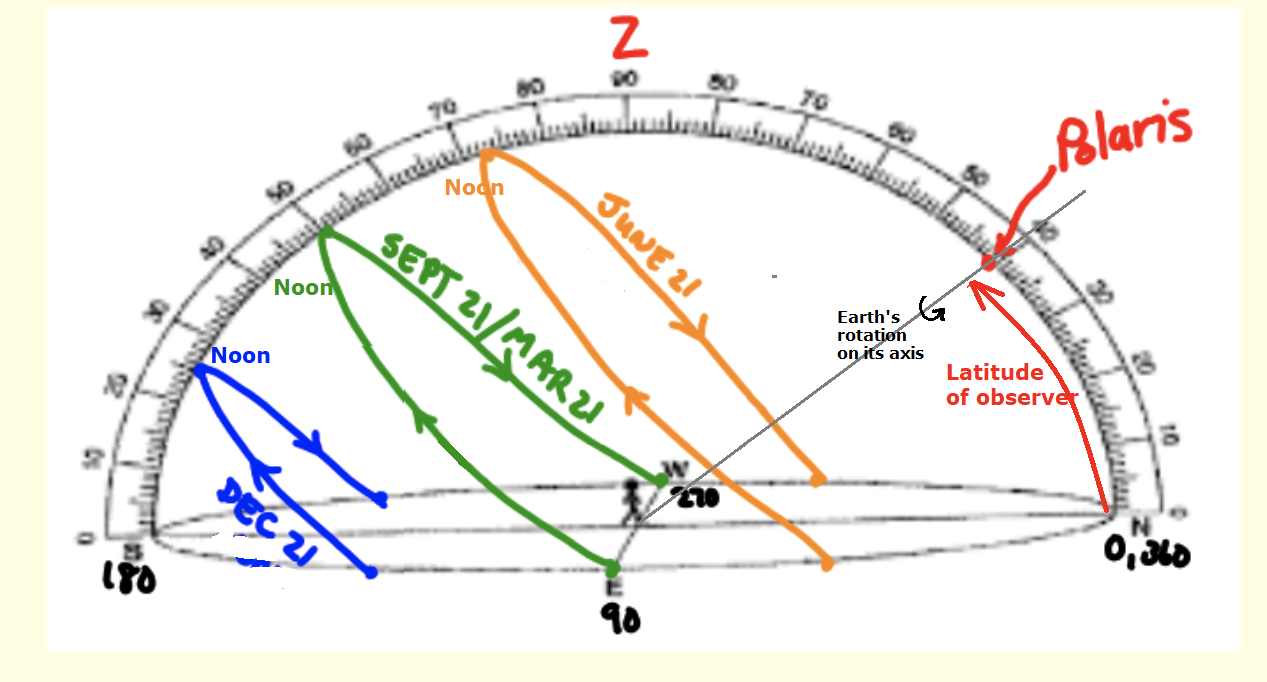- EARTH AND SUN:
Earth is a planet that spins (rotates) on its axis while it revolves around the sun.
Half of the Earth is always facing the Sun; it is daytime in this half.
The other half of the Earth faces away from the Sun and experiences night.
As the Earth spins, the Sun appears to rise each morning and set every evening.
Remember: "The sun rises in the East, and sets in the West.
One rotation, called a day, takes 24 hours.
The Earth also revolves around the Sun. One revolution is called a year and takes about 365.24 days.
- Seasons:
Earth's axis is tilted about 23.5 degrees; its spin is not quite perpendicular to the plane of its orbit (the ecliptic).
When the Northern Hemisphere is tilted toward the Sun, days are longer and warmer in the Northern Hemisphere. We call this summer.
When the Northern Hemisphere is tilted away from the Sun, days are shorter (nights are longer) and it gets
colder in the Northern Hemisphere. We call this winter.
When it is summer in the Northern Hemisphere, it is winter in the Southern Hemisphere, and vice versa.
During each Equionox (the Spring or Vernal Equinox around March 21, and alsio the Autumnal Equinox around September 21),
days and nights
are equal everywhere on Earth (each is 12 hours long).
Remember: "Equi- Nox" means "Equal Night" (and day).
Sun's path across the sky to an observer at Latitude 41oN -- New York

Azimuth angles: N=0 or 360; E=90; S=180; W=270
- OTHER PLANETS:
Each of the other planets in the Solar System revolves around the Sun in the same direction as Earth,
but the time of one revolution (the length of that planet's "year") varies greatly.
Each planet also has its own period of rotation around its own axis (the length of its "day")
(For a chart showing each planet's mass, day length, year length, and other data,
please consult page 15 of this reference chart.)
|